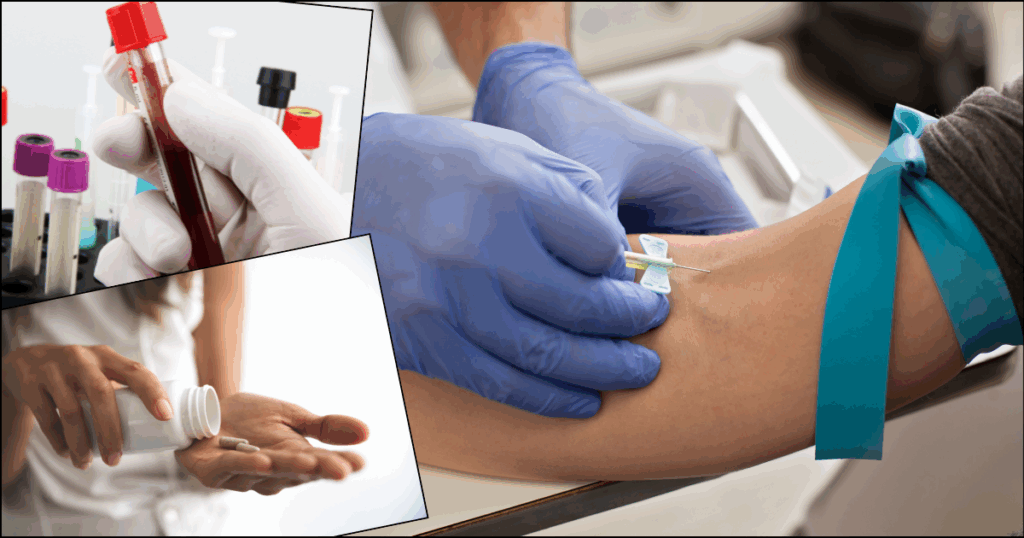Surprised by the results of your recent lab test? Those suspiciously high numbers may not be your imagination. Studies show 68% of lab tests show some variability, so your numbers may very well look different from any previous tests you’ve tried.
There’s also more and more news regarding inaccurate or misleading blood tests, which is pushing an increasing amount of people to try testing at home.
And while 100% accuracy isn’t necessarily feasible, there are still things you can do to get more accurate numbers.
Here’s how.
Everything affecting your lab work numbers
Gathering, preparing, and analyzing blood is difficult, even with the tools we have today.
There are several reasons why:
- Different labs use different methods and machines. You can measure the same blood sample on two separate machines and still get numbers that look significantly different. That’s one of the reasons why there’s a 15% variation acceptance rate (also called the coefficient of variability) for most lab results.
- Some substances are more likely to vary than others. For example, hormones like cortisol and insulin are far less likely to vary between multiple analysis machines and blood work providers. On the other hand, substances like testosterone and vitamin D can vary as much as 300% to 600% or more.
- Inevitable human error. It’s a fact of life that people make mistakes, whether they’re the ones drawing blood or testing a sample. There might not be enough of a sample to take an adequate reading, contamination from the draw site, damaged samples, and other issues.
- Draw sites have different blood consistencies. There are two different places to draw blood from: capillaries (aka finger prick tests) and venous (like a needle in your arm). You can get high-quality draws from both of these sites, although studies show that capillary draws are more prone to errors and less reliable than venous.
How to draw the most accurate blood tests
There’s no way to guarantee the accuracy of a blood test. But there may be some things you can do for proper readings.
Whether you’re testing at a clinic or drawing samples at home, here are a few best practices to keep in mind:
1. Hydrate adequately
Fasting blood draws usually allow you to drink water unless you’ve been specifically instructed not to by a doctor or at-home test. Do your best to drink at least 64 ounces 24 hours before your test. If you traditionally struggle with finding a vein or getting a large enough sample, try drinking 32 ounces of water 60 minutes prior to your draw.
2. Wean off supplements before your draw
If you’re currently taking supplements, wait at least two days to two weeks to let your body return to baseline. This will give you a more accurate picture of how your body is performing. It will also let you look at underlying issues, like a vitamin B12 deficiency or low vitamin D.
3. Draw samples correctly
If you’re taking an at-home test and drawing your own blood, you’ll want to follow a few best practices to make sure you’re getting high-quality samples.
For starters, be sure you’ve fasted at least 12 hours and avoided morning drinks like coffee or tea. Experts like Dr. Ken Berry recommend 14 to 15 hours, while Dr. Shawn Baker recommends 18 or more.
You should also make sure your arms or hands are warm so blood flows more freely during your draw. If possible, get into a standing position to let gravity do some of the work. If this isn’t possible, consider light arm movements to warm up your muscles.
Before drawing, clean the area with a residual disinfectant and let it dry for 30 seconds. Once you’ve used the lancet correctly (or used a microneedle patch), cover the entry point quickly to avoid contamination.
The final step is preparing your sample for shipping. You may need to wait for a card to dry, tightly seal vials, or store samples in your refrigerator. Be sure to follow any instructions with your test to ensure the most accurate readings possible.
4. Watch your medications
This may include substances like:
- Acetaminophen
- Antibacterials (Cephalosporins, doxycycline)
- Psychotropics (antidepressants and antipsychotics)
- Herbs (St. John’s wort)
- NSAIDs (Aspirin)
Some medications, like NSAIDs and Acetaminophen, can be stopped at any time. Others, like psychotropics, may require a longer weaning process. Remember: medications aren’t the best way to treat chronic disease, and the sooner you make strides to reclaim your metabolic health, the sooner you can wean them off and get more accurate numbers from your blood tests.
5. Lay off bad habits
It’s likely no surprise to anyone, but both smoking and drinking can skew blood test results. Smoking can increase white and red blood cell counts, while alcohol can alter sugar and fat levels that ultimately impact lipid panels and A1C tests.
You should lay off from both at least 12 hours before your test. And if you haven’t already, consider quitting as soon as you can.
6. Go easy on the exercise
This is probably the only time you’ll see me discourage you from exercising. But if you’re getting a metabolic panel or ordering specialty lab work, you should hold off at least 24 hours before your draw. This is because periods of strenuous exercise can alter cortisol, blood glucose, pseudoanemia markers, and even LDL-C levels.
7. Test often and consistently
If you can’t expect 100% accurate results, do your best to eliminate variability.
This means:
- Picking one blood test provider and sticking with them. Labcorp and Quest are two popular options. There are an increasing number of test at home options as well.
- Ordering regular blood work throughout the year. If you’re following my protocol, you’re likely getting tested three to four times per year..
- Choosing the same time of day to schedule your tests. For example, maybe you always draw blood around 12 PM, or you only go to the clinic after 8 AM on weekends.
Where we go from here
Blood testing isn’t yet an exact science. But that doesn’t mean there aren’t things you can do to improve accuracy. Avoid supplements and unnecessary medications, test consistently and frequently, and of course, select a testing provider with a strong history of accuracy.
And if you want my help interpreting your recent lab results, you can purchase a private lab review at ifixhearts.com/talk.

Looking for the highest-quality meat from farmers who share your values?
I’m proud to partner with Route 22 Meats, where we connect health-conscious families with clean, sustainably raised meat from small family farms.
Your support doesn’t just bring premium cuts to your table. It helps empower local farmers, promote regenerative agriculture, and support a grassroots mission to improve food quality—and health—for all.
Explore our selection and experience the difference today.

